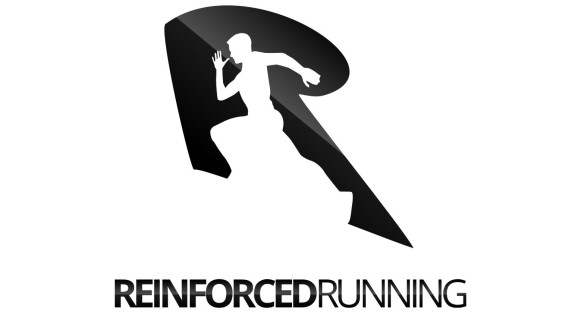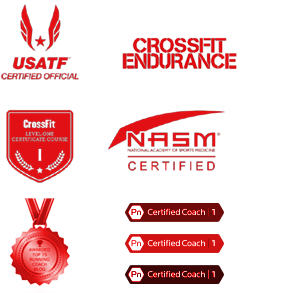What you can learn from Kobe Bryant to Improve your Endurance Training
I remember when Kobe Bryant came into the NBA.
He opted to skip college and enter the draft straight out of high school.
I couldn’t believe the audacity. My 10-year-old self didn’t like Kobe from the start.
I remember watching his playoff game against the Jazz during his rookie year and rooting against him with vigor.
It was game 5, and the Lakers were down 3-1 in a seven-game series. The Lakers lost several players to fouls, including Shaq in his prime.
It was up to the 19-year-old rookie straight to fill the bill for the Lakers during the biggest moment of the season.
And Kobe sucked. He shot four airballs during regulation and overtime.
Four airballs!
I know for a fact that I could have done the same thing.
I loved it! He wasn’t ready to be great, and I wasn’t ready for him to be great. So I was happy when he came up short.
But long term, rooting against Kobe was rough.
He was a killer and a winner. He would to scratch and claw his way to victory.
Then in 2004, he gave himself the nickname. The Black Mamba. Which he obviously stole from Uma Thurman’s character in the Quinton Tarantino movie “Kill Bill.”
A cornball move.
But then he scored 81 in a game, led the league in scoring twice, received MVP of the league once, and won two championships.
He also coined his mindset as “The Mamba Mentality.”
Also corny.
But with his tragic death, I’ve spent a lot of time reflecting on Kobe. It’s a weird thing. I don’t know him, his death doesn’t affect my life way. But I was touched by his presence.
As I reflect on my own journey as an athlete, I realize how real the mamba mentality is and how important it is for performance and achievement.
Kobe described the mamba mentality as this:
“Mamba mentality is about 4 a.m. workouts, doing more than the next guy and then trusting in the work you’ve put in when it’s time to perform. Without studying, preparation, and practice, you’re leaving the outcome to fate. I don’t do fate.”
There is always something more you can do. There is still more focus and effort you can apply.
Always.
If you think you are giving it your all – you’re wrong. You need to find ways to improve and learn from those who are at a higher level.
And you will never get to the point where you are doing everything.
Which means you have an unlimited cap to what you can accomplish and how much you can focus.
So when you head into your next run, or workout or race. Take time to ask yourself about what you could do to get the most out of yourself. How can you separate yourself from the pack? How can you be better than you have ever been?
How to use the Mamba Mentality for better training.
When it comes to endurance, there are several points where you can get better.
In some particular order, here are a few things you can add and change.
Training, nutrition, sleep, and goals. After this, it is up to you for what will move the needle the most.
Running and training.
Volume is the number one performance indicator when it comes to endurance performance.
Which means running more or doing more aerobic work. The more aerobic work you do, the more gains you will see from recovery and endurance.
Adding volume is a perfect place to start if you want to up your training.
Start by adding frequency (running more often). If you have a day where you can sneak in an extra 30-minute run, then start there. See how your body responds and add another.
Once you are running 6-7 days a week, then add time to your daily runs. Spread the time out across the week. Adding a half-mile here and there to your runs so that you don’t have several daunting long runs a week.
Keep building 2-3 weeks at a time. Give yourself a cut in volume every 3-4 weeks to help with mental and physical stress.
Keep your long run to about 30% of your weekly volume. If you are running 20 miles a week across three days and your long run is 10 miles, you are setting yourself up to get hurt. Adding short runs two days a week will help build resilience and will up your volume and reduce the risk of injury.
There is no perfect amount of miles for one person. So instead of asking, “how many miles do I need to run to BQ?” go find out for yourself. The best number is the most that you can handle.
For some that 120 for others, it’s 50. But Unless you’ve tried to build those miles, it doesn’t matter how far or how long.
Speedwork
Once your volume is in order is when you can start to work on your speed work. The speed work will make you faster for freakin sure. But the semantics of speed work doesn’t matter if you are only running three days a week. The different types of speed work can only really matter once you have pushed your volume. The speed work is the icing on top.
So 100-meter sprints may help your running economy and muscle but to get more fit you need longer intervals
There are many different ways to incorporate speed work, including VO2Max intervals and Threshold Repeats. (link both)
Nutrition
Nutrition is literally (not literally but in my experience) the most overlooked aspect of training.
We seem to think of food as a way to mitigate damage. People just don’t want to f*ck themselves up with pizza and burgers. There is a lot of shame tied to food that we won’t discuss here.
There are also traps set for us. Marketing works. Like really well. So we don’t know what is good and not good for us.
So we mostly just want to make it through the day without screwing things up.
For an endurance athlete,e the best way to use nutrition and food to our advantage is through thermodynamics. Basically, calories in and calories out.
It is a pain in the ass to track your food – but it is something you can take to make sure you get the most out of your training and recovery.
You don’t need to worry about drinking tart cherry juice, or CBD infused smoothies if you don’t know how much energy you are taking in vs. how much you are burning.
Start tracking to learn how much you need based on how much you are running.
Learn more about Macros Here
Read how to eat more food and not get fat here
Boozing
If you are drinking, then you are giving up results. Plain and simple.
And listen. If anyone knows it’s me. I drink like an Irish American immigrant from upstate New York who has nothing better to do in the wintertime.
Drinking single-handled ruined several seasons of my athletic career. When you don’t drink, you will be better. Like much much better. I’m sorry.
Sleep
I lied before. I said nutrition is the most overlooked aspect of training. It’s really sleep.
If you are not sleeping well, you are not recovering well. And if you are not recovering well, then it doesn’t matter what you do during training.
Training is the process of breaking yourself down so that you can recover stronger and faster. You do that with sleep.
Before you go out and take sleep supplements, make sure you are tracking your sleep. You can do it with a simple journal where you write down the time you got to bed and the time you woke up. Knowing how many hours you are sleeping is a great start.
Pretty much any smartwatch on the market will have some kind of sleep tracking software available. This is a great step because it collects data automatically for you to observe.
Then you can look at your lifestyle to figure out what is hurting your sleep. Too much blue light in the evenings? Too much coffee late in the day? Stress levels through the rough?
Then you can practice different strategies that can make things more clear.
However – It’s not possible to accurately gain sleep insight with a wearable. It can give you a good idea of how much you are moving and your heart rate – but it won’t tell the whole story. The wearable tech is coming along, and eventually, we will get there. But right now, we are not.
Sorry Whoop strap loyalist.
The argument I have no answer for is, “but I have kids.”
I’m not a parent, so I dunno. So you might need to be creative. Also – don’t be afraid of naps.

